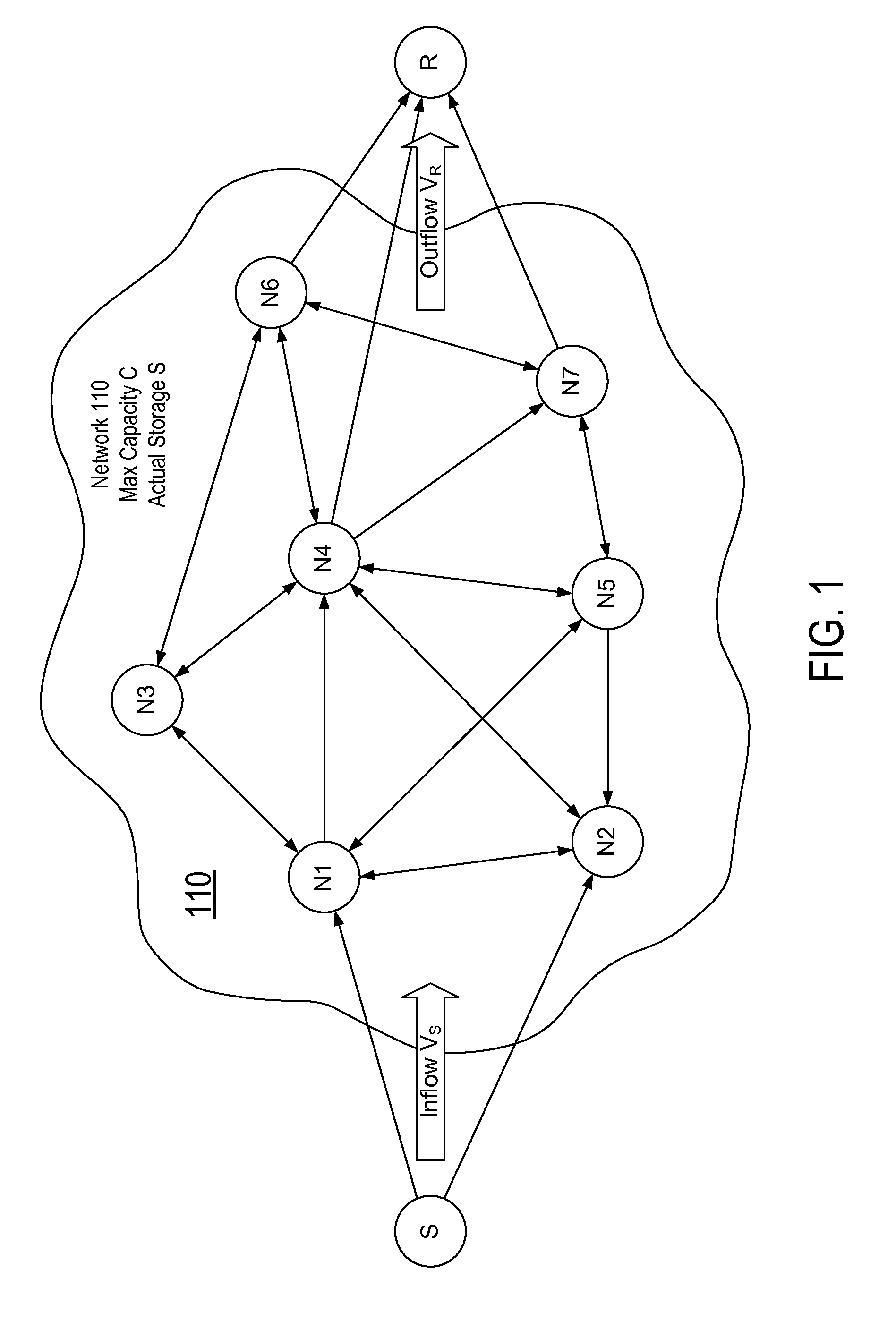Authenticated adversarial routing
a technology of adversarial routing and adversarial routing, applied in the field of data communication, can solve the problems of not attempting to ensure successful or efficient routing between the sender and the receiver, and no prior work based on the slide protocol that can handle malicious behavior of nodes,
- Summary
- Abstract
- Description
- Claims
- Application Information
AI Technical Summary
Benefits of technology
Problems solved by technology
Method used
Image
Examples
case 423
[0142]Fault Detection. In the absence of a node-controlling adversary, this example protocol is similar to the Slide protocol, with the addition of authentication that accompanies interactions between two nodes. The sender attempts to pump the 4n3 / λ codeword packets of the first message into the network, with packet movement 415 as in the original Slide protocol. We consider 420 all possible outcomes:[0143](Case 421 in FIG. 4) The sender is able to insert all codeword packets and the receiver is able to decode. In this case, the message was transmitted successfully, and the protocol moves to transfer the next message.[0144](Case 422) The sender is able to insert all codeword packets, but the receiver has not received enough to decode. In this case, the receiver floods the network with a single-bit message indicating possible packet deletion has occurred.[0145](Case 423) The sender is able to insert all codeword packets, but the receiver cannot decode because he has received duplicat...
case f2
[0218] Anytime a packet at height h in an outgoing stack of A is transferred to an incoming stack of B at height h′, A's node potential will drop by h and B's node potential will increase by h′. So for edge E(A, B), A and B each keep two values, the cumulative decrease in A's potential from packets leaving A, and the cumulative increase in B's potential from those packets entering B. These quantities are updated every time a packet is transferred across the edge, along with a tag indicating the round index and a signature from the neighbor validating the quantities and round index. Loosely speaking, case F2 corresponds to packet duplication. If a corrupt node attempts to slow transmission by duplicating packets, that node will have introduced extra potential in the network that cannot be accounted for, and the signing of potential changes will allow us to identify such a node.
[0219]As another example, consider a malicious node X that has one edge E(X, A) connected to a node A close ...
case f3
[0220] A and B will keep track of the net number of packets that have traveled across edge E(A, B). This number is updated any time a packet is passed across the edge, and the updated quantity, tagged with the round index, is signed by both nodes, who need only store the most recent quantity. Loosely speaking, case F3 corresponds to packet deletion. In particular, the information signed here is used to find a node that inputs more packets than it outputs, and such that the node's capacity to store packets in its stacks cannot account for the difference.
PUM
 Login to View More
Login to View More Abstract
Description
Claims
Application Information
 Login to View More
Login to View More - R&D
- Intellectual Property
- Life Sciences
- Materials
- Tech Scout
- Unparalleled Data Quality
- Higher Quality Content
- 60% Fewer Hallucinations
Browse by: Latest US Patents, China's latest patents, Technical Efficacy Thesaurus, Application Domain, Technology Topic, Popular Technical Reports.
© 2025 PatSnap. All rights reserved.Legal|Privacy policy|Modern Slavery Act Transparency Statement|Sitemap|About US| Contact US: help@patsnap.com



